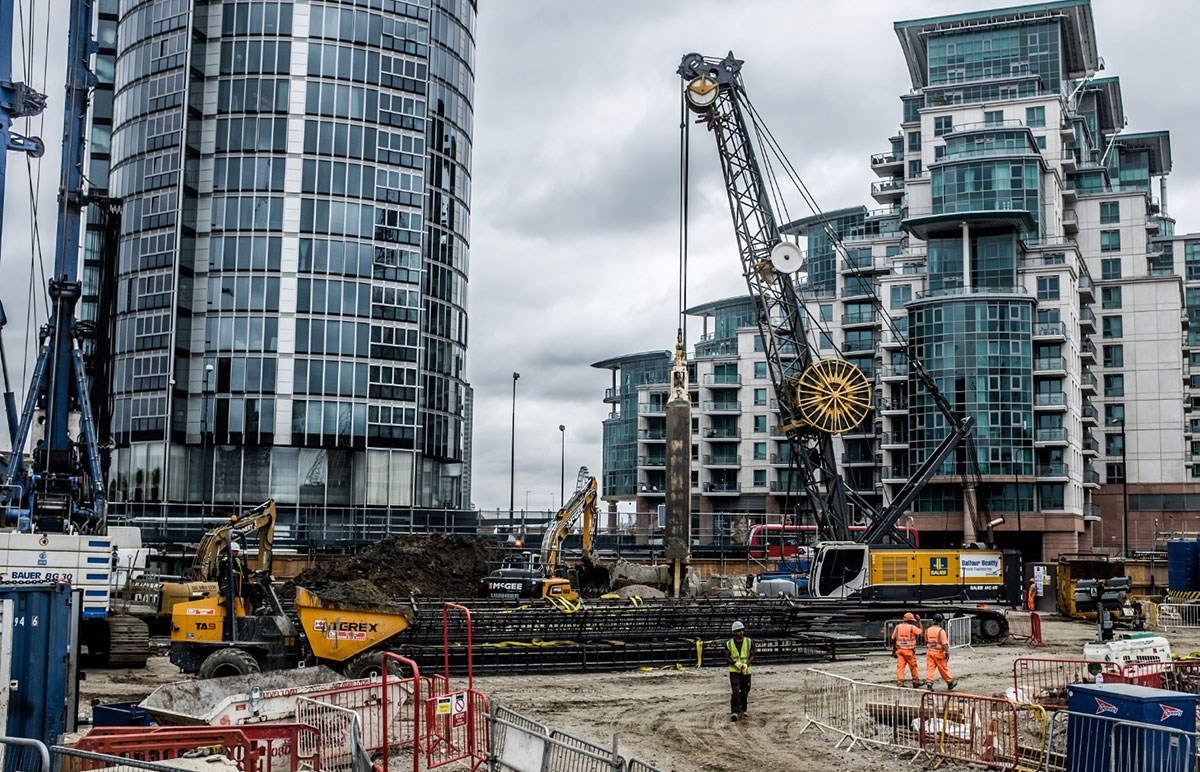The Main Principles Of Geotheta
The Main Principles Of Geotheta
Blog Article
Getting My Geotheta To Work
Table of ContentsGeotheta for DummiesNot known Facts About GeothetaA Biased View of GeothetaSome Known Details About Geotheta Top Guidelines Of Geotheta

They carry out website investigations, accumulate samples, do research laboratory examinations, and examine data to assess the viability of the ground for building and construction projects - Tailings Engineer. Based on their findings, geotechnical engineers supply recommendations for foundation style, incline security, maintaining frameworks, and reduction of geotechnical risks. They collaborate with various other specialists, such as designers, architectural designers, and building teams, to ensure that geotechnical factors to consider are incorporated into the overall project layout and implementation
By assessing the behavior and homes of soil and rock, they can identify possible geotechnical risks such as landslides, soil negotiation, or slope instability. Their proficiency aids avoid failings or mishaps that could jeopardize lives and building. Below are some detailed obligations and obligations of a geotechnical designer: Site Examination: Geotechnical engineers conduct site investigations to gather data on subsurface problems.
They analyze the data to comprehend the properties and actions of the dirt and rock, including their strength, permeability, compaction attributes, and groundwater conditions. Geotechnical Analysis and Layout: Geotechnical engineers examine the information accumulated during site investigations to examine the stability and suitability of the website for building jobs. They carry out geotechnical calculations and modeling to examine elements such as bearing capability, negotiation, slope stability, lateral earth stress, and groundwater flow.
Get This Report about Geotheta
Foundation Layout: Geotechnical engineers play a critical role in making foundations that can securely support the intended framework. They analyze the dirt problems and tons demands to establish the appropriate structure kind, such as superficial foundations (e.g., footings), deep structures (e.g (https://www.easel.ly/browserEasel/14498559)., stacks), or specialized techniques like soil renovation. They think about variables such as negotiation restrictions, birthing capacity, and soil-structure communication to establish optimum foundation styles
They evaluate construction plans, screen site activities, and conduct area examinations to confirm that the design suggestions are adhered to. If unforeseen geotechnical problems emerge, they analyze the circumstance and offer suggestions for removal or changes to the layout. Risk Assessment and Reduction: Geotechnical engineers analyze geotechnical dangers and risks connected with the project site, such as landslides, liquefaction, or soil erosion.

Collaboration and Communication: Geotechnical designers work closely with various other experts associated with a project, such as engineers, structural designers, and building groups. Reliable communication and partnership are important to incorporate geotechnical considerations into the overall task design and building and construction process. Geotechnical engineers offer technical proficiency, response queries, and ensure that geotechnical needs are met.
Geotheta Fundamentals Explained
Below are some kinds of geotechnical designers: Structure Designer: Structure engineers focus on developing and assessing foundations for structures. They evaluate the soil conditions, tons needs, and website features to establish the most suitable structure kind and design, such as shallow foundations, deep structures, or specialized methods like stack foundations.
They examine the factors affecting slope security, such as dirt residential properties, groundwater conditions, and slope geometry, and develop strategies to avoid slope failures and reduce threats. Quake Engineer: Quake engineers focus on analyzing and designing structures to withstand seismic forces. They evaluate the seismic hazard of a website, examine dirt liquefaction potential, and establish seismic style standards to ensure the security and durability of structures throughout quakes.
They carry out area testing, gather examples, and evaluate the gathered information to define the dirt homes, geologic formations, and groundwater conditions at a site. Geotechnical Instrumentation Designer: Geotechnical instrumentation engineers focus on monitoring and determining the behavior of soil, rock, and structures. They set up and maintain instrumentation systems that monitor elements such as soil negotiation, groundwater degrees, slope movements, and structural variations to evaluate performance and supply very early cautions of potential issues.
6 Easy Facts About Geotheta Explained
They carry out examinations such as triaxial tests, debt consolidation examinations, direct shear tests, and permeability examinations to collect information for geotechnical evaluation and design. Geosynthetics Designer: Geosynthetics designers specialize in the style and application of geosynthetic products, such as geotextiles, geogrids, and geomembranes. They use these materials to boost dirt stability, strengthen inclines, give water drainage remedies, and control erosion.
They tend to be investigative individuals, which implies they're intellectual, introspective, and pop over to this site curious. They are curious, methodical, sensible, logical, and rational. Some of them are likewise social, implying they're kind, generous, participating, patient, caring, useful, compassionate, sensible, and pleasant - Engineer of Record.
In the workplace setting, geotechnical engineers utilize specialized software application devices to perform calculations, create styles, and examine data. They prepare records, review task specs, interact with clients and employee, and coordinate project tasks. The office setup supplies a favorable setting for research, analysis, and cooperation with other experts associated with the task.
Some Known Details About Geotheta
They frequently see job websites to conduct site examinations, analyze geotechnical problems, and gather information for analysis. These sees include traveling to different locations, occasionally in remote or difficult surfaces. Geotechnical designers may do dirt sampling, conduct tests, and monitor construction tasks to ensure that the geotechnical elements of the job are being carried out correctly.
Geotechnical engineers likewise function in specialized geotechnical labs. Geotechnical research laboratory designers work thoroughly in these atmospheres, dealing with screening devices, operating instruments, and recording data.
Report this page